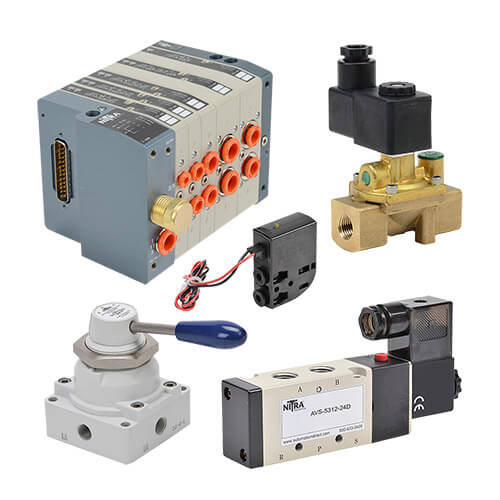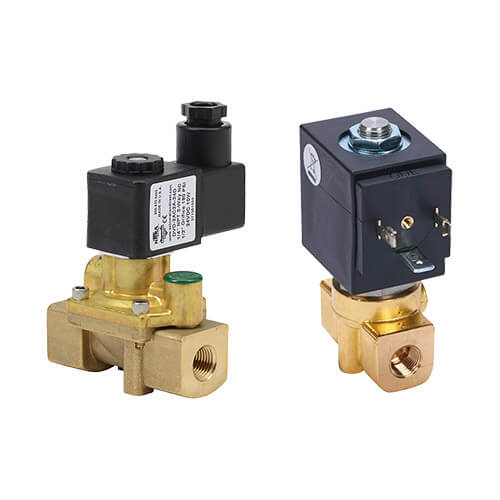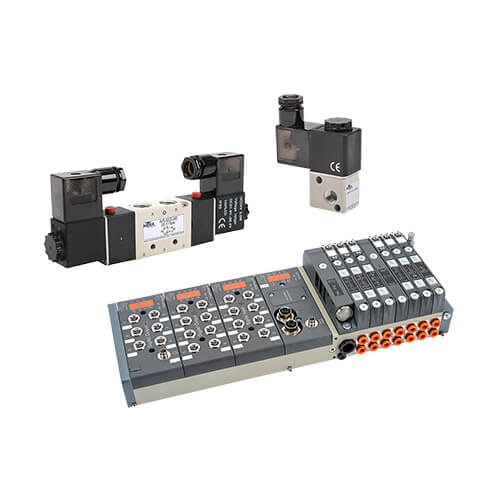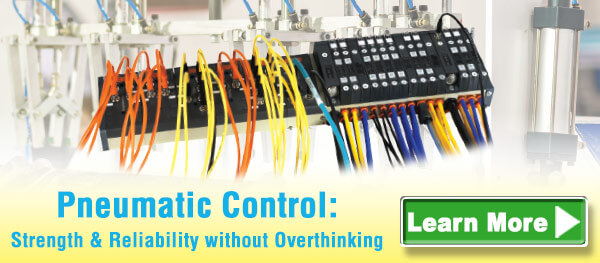Valves are fundamental devices for controlling gas and liquid flow, and adding solenoids enables them to be remotely controlled and automated.

Valves come in many shapes and sizes and are a basic type of mechanical component used in all manner of equipment, machinery, and processes. Valves can physically be opened or closed completely, and sometimes to positions in-between, to control the availability, flow, and pressure of gasses and liquids. This blog specifically looks at solenoid-operated valves—commonly called solenoid valves—and how they work to enable many industrial automation capabilities.
Solenoid Actuation Method
Anything that physically moves a valve is the actuator. Manual valves require a person to operate a handle to open and close the valve. Automatic valves use electro-mechanical arrangements to actuate them, enabling them to be controlled from remote locations by operators or control systems, and opening up many more functional possibilities.
One actuation method for valves uses electro-mechanical solenoids to operate valves directly or indirectly. A basic solenoid consists of an electrical winding, also called a coil, arranged around a movable metal core or piston, which may be spring-loaded. When a control voltage—usually 12Vdc, 24Vdc, 24Vac, or 120Vac for industrial purposes—is applied, the coil becomes an electromagnet and moves the core.
Process Valves
For small process valves up to perhaps 2” in pipe diameter, it is possible for a solenoid to generate enough force to operate the valve directly. These types of compact solenoid process valves are very useful for controlling the on/off flow of pressurized gasses or liquids on a machine or piece of equipment.

Imagine a machine which conveys parts to be washed. Solenoid process valves could be used to apply compressed air to a cylinder which extends to hold the part, and to supply water to a nozzle directed to wash the part.
Control Valves
But what about larger valves? A popular method for actuating valves ranging from small to large is to use pneumatic control. Small solenoid control valves can be used to apply compressed air (or any compressed gas) to operate a pneumatic mechanism, which in turn opens and closes a larger valve. Pneumatic mechanisms can be rotary type or linear actuators, and the small solenoid control valves are sometimes called pilot valves.
Control valves are available as single standalone components. Where there is a high density of solenoid control valves needed for a given area, they are also available as modular assemblies, where many solenoids can be ganged on to a single manifold.
Solenoid manifolds are compact as compared to individual valves, and they reduce required plumbing to simplify installation and maintenance. Each solenoid can be traditionally hard-wired, but newer intelligent manifolds can use industrial communications protocols so that programmable logic controllers can operate many solenoids via one network link.

Solenoid Valve Sizing
Designers must consider several details when selecting solenoid valves for their applications.
- Electrical: The solenoid voltage and current draw must be compatible with what is available from the hardwired or PLC-based controls.
- Service: Process valves are installed in process piping to control the media (air, oil, inert gas, water, etc.), while control valves usually operate other valves and equipment pneumatically using a compressed gas, typically air.
- Sizing: Solenoid valves must be sized to withstand the expected operating conditions and pressures, while providing sufficient flow to the load. Each solenoid valve will have an allowable pressure range (note that some valves need at least a minimum pressure to operate), and a published flow coefficient (Cv) value, which indicates the flow characteristics. Many valve suppliers offer calculation software to assist with sizing.
- Port size: The connection ports must match up with piping and fitting sizes, but note that the flow sizing also impacts the available port sizes.
- Process valve type: The most basic valves are 2-way, 2-position. These valves have two connection ports and two positions (open or closed). Another popular configuration is 3-way, 2-position, which has three ports arranged so that a common port is connected to only one of the other two at a time.
- Control valve type: Control valves are also available in 2-way, 2-position and 3-way, 2-position configurations, as well as many other arrangements such as 5-way, 3-position. Control valves may use single-acting coils, where a spring is used to return the valve to rest when de-energized. More complicated combinations may use multiple coils and various spring-return-to-center arrangements.
- Options: Some solenoids are hardwired, while others may accept connectorized cordsets to simplify installation. LED indicator lights and surge-suppression are convenient options to improve troubleshooting and increase operating life.
Getting the Right Solenoid Valve for the Job
With so many options, it can be difficult to choose the best product for each application. The AutomationDirect website provides many ways to search and filter product results, and it also offers lots of resources and customer support methods, making it easy for designers to find the right solenoid valves for their application.


